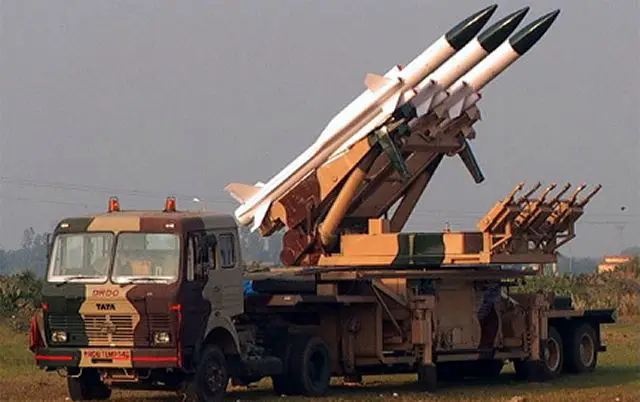Breaking news
Indian military plans induction of new air defense systems worth $3.2 bn.
|
|
|||
|
Defence & Security News - India
|
|||
|
|
|||
| Indian military plans induction of new air defense systems worth $3.2 bn. | |||
|
The Indian Army is sprucing up its stores and acquiring air defence guns after a gap of three decades, announced yesterday the Indian newspaper The Sunday Standard. Majority of the systems on the inventory of the Army’s air defence are either obsolete or nearing obsolescence, as the last air defence guns, which are meant to provide an umbrella to the Army’s static assets from an aerial object, were procured in the early 80s.
|
|||
|
|
|||
 India will soon induct two units of the indigenously developed Akash surface-to-air missile India will soon induct two units of the indigenously developed Akash surface-to-air missile |
|||
|
|
|||
|
In a letter dated March 12, 2012, the then Indian Army Chief General V K Singh had warned the then Prime Minister Manmohan Singh that the country’s security was at risk as 97 per cent of air defence inventory was ‘obsolete’.
The current government has decided to strengthen Army’s air defence, with planned induction of wide array of sophisticated radars and missile systems of project cost of over Rs 20,000 crore ($3.2 bn). The Indian Army is all set to induct two units of the indigenously developed ‘Akash’ surface-to air missile. The Defence Research Development Organisation (DRDO), which produced the missile system, and the Army are looking for a suitable date for the ceremony. Officials sources say that as the project is the first on lines of Prime Minister Narendra Modi’s ‘Make in India’ initiative, the defence ministry wants to make the induction ceremony a mega event. Army sources also confirmed that both these units will be strategically located at the western border shared with Pakistan to provide air defence to military assets. Subsequently, they will be deployed at the eastern sector at the Line of Actual Control with China. Akash, the India-made surface-to-air missile system, can target an aerial object or aircraft upto 30 kilometres at an altitude of 18,000 metres. Though the Air Force version of this missile system has already been inducted, the Army’s version of Akash supersonic missile will be capable of flying at more than twice the speed of sound, according to defence officials. The heart of the Akash is the ‘Rohini’ radar that can detect an aircraft 120 km away. And this mobile missile system will be mounted on Tatra vehicles to provide a higher degree of speed and mobility. Though the DRDO says Akash, developed jointly by DRDO and Bharat Electronics Limited (BEL), has a 98 per cent hit probability, the project has gone through a lot of hiccups, say defence analysts. Akash missile was primarily developed for the Indian Army to replace its vintage Kvadrat system, which was bought 40 years ago. It was intended to provide air defence cover to the fast-paced manoeuvres of mechanised forces on the move like tanks or heavy artillery. But during trials, the missile system failed miserably to hit the target accurately during mobility. Officials said it led to delays but to avoid embarrassment, the defence ministry decided to induct those surface-to-air missile with Indian Air Force to replace IAF’s vintage Russian Pechora missiles as static version in 2012. The Air Force did not require mobility and only needed to further beef up the layered air defence of static vulnerable areas such as its airfields and hangers from enemy aircraft. The IAF has deployed these air defenses at the China border. |
|||
|
|






















